SOTOCHIKU in Kyonan Town, started after typhoon damage
・・・・・・・・・・
Hello everyone, how are you all? This is Tanaka from GRIDFRAME.
<SOTOCHIKIU in Kyonan Town, which began after typhoon damage>
September 9, 2019 marks five years since the Boso Peninsula Typhoon. In Kyonan Town, where homes suffered severe damage, people are still moving out of town because they cannot afford to rebuild.
Since January 2022, GRIDFRAME has been co-running a cafe and SOTOCHIKU showroom called “Pakchi Bank” in front of Hota Station in Kyonan Town with Mr. Kyo Satani.
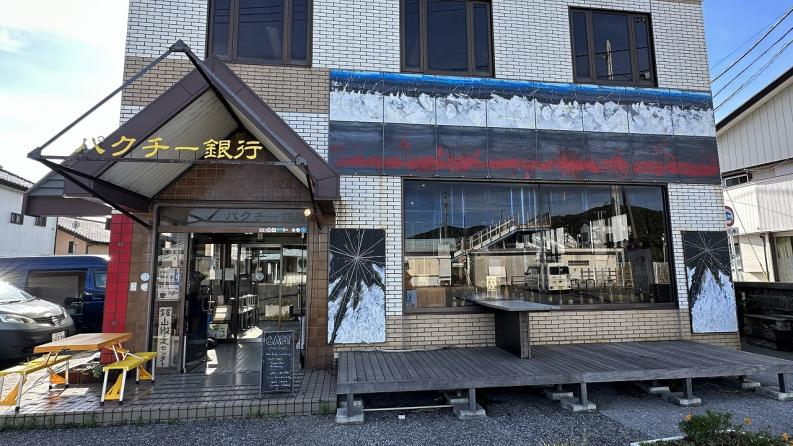
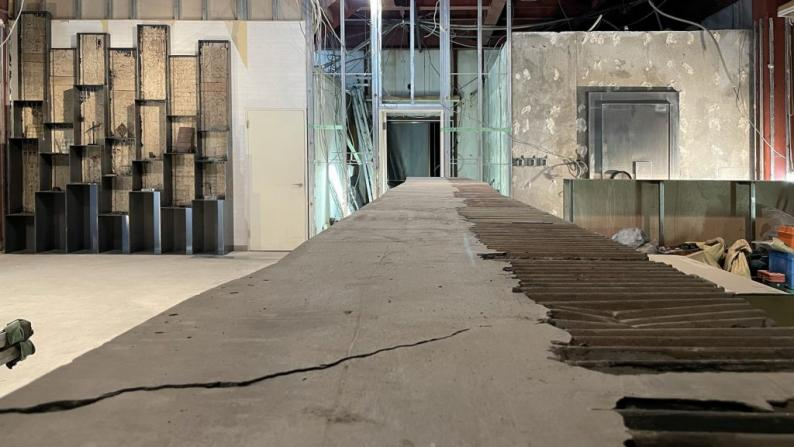
The typhoon hit just after Satani had signed a contract for another property in Kyonan to start a coworking space and artist residency. After hesitating about whether it was appropriate to start a business in the devastated situation, he decided to get involved as a volunteer in the recovery efforts, thinking, “In times of trouble, more people are needed.”
I approached Satani in November 2020. SOTOCHIKU hadn’t yet been established as a concrete project, and I was simply searching for materials for SOTOCHIKU. One day, after a staff member went fishing at Kanaya Port near Kyonan Town on a day off, he showed me a photo on his smartphone, saying, “I found the reinforced concrete of the quay damaged by the typhoon fascinating.” I was captivated by the photo’s appeal as a material, and ended up sending a message to Satani, a friend of mine for 13 years, asking, “Is this still at Kanaya Port?”, which was impossible to understand.

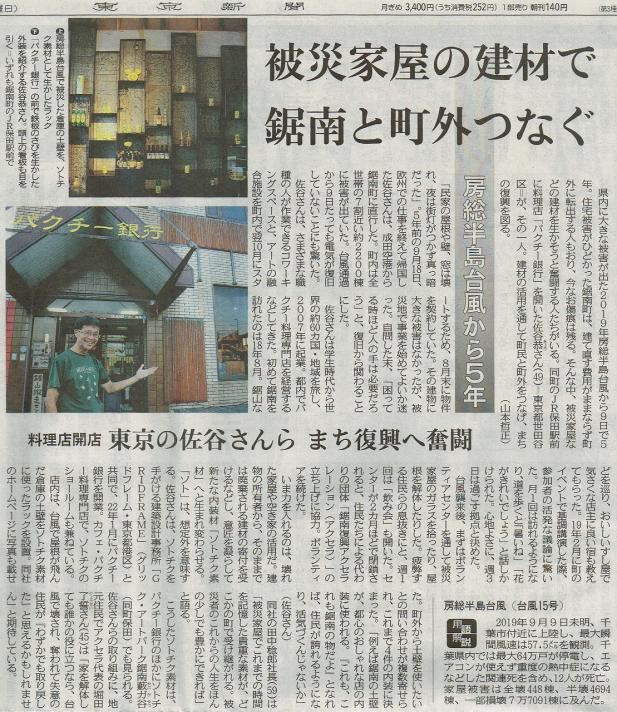
In the end, the reinforced concrete had already been sent to a contractor for demolition, so we were unable to donate it as material, but this inquiry prompted me to visit Mr. Satani, who showed me around Kyonan Town. As we talked, we both realized that this town, with its many destroyed and vacant homes, is a treasure trove of SOTOCHIKU materials.
Things progressed smoothly from there, and SOTOCHIKU & 89 unLtd. (commonly known as Pakchi Bank) was completed, and Kyonan Town became our main base for collecting SOTOCHIKU materials.
As it has been five years since the typhoon damage, the activities of the two were featured in the Tokyo Shimbun newspaper (September 10, 2024).
“For example, Kyonan clay walls are used in the interiors of fashionable stores in the city center. If people could say, ‘This, this, this is from Kyonan,’ it would give the residents a sense of pride and revitalize the area.” (Mr. Satani’s words in the article)
<Heavy rain in Oku-Noto>

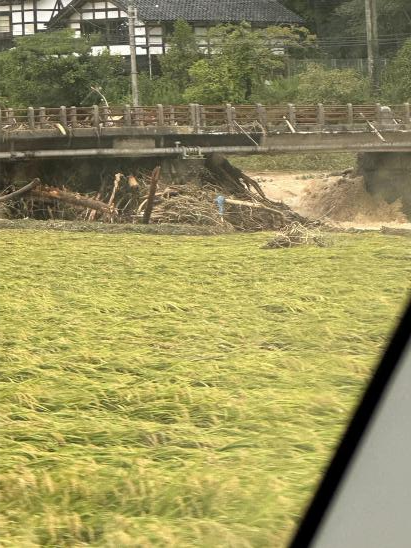
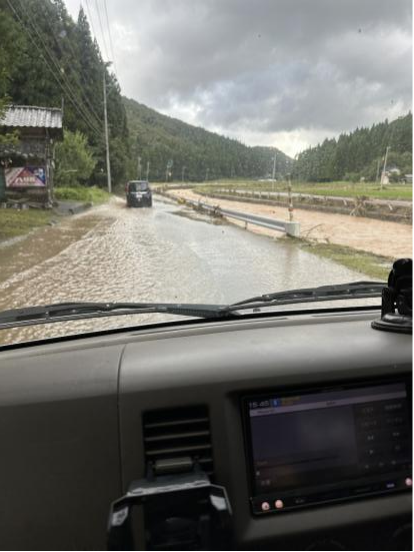
The heavy rains on September 21st were the second major disaster this year for Oku-Noto. Staff member M had been in Noto since the 20th to volunteer, marking his 10th visit since March. I was scheduled to join M and other Matsurism-related people on the 22nd to attend the Abare Festival After Party.
Below is a report from Mr. M on what happened on the 20th and 21st.
・・・・・・・・・
We had planned to arrive in Wajima on September 20th and stay at Arinko’s House (a volunteer base NPO), but the rain started to get heavier, so I contacted B, who said, “The rain is so bad here that it’s dangerous at night, so let’s go together tomorrow.” We went as far as Nanao, but returned to Himi and spent the night in the car. The rain wasn’t too bad in Nanao or Himi.
The next morning, heading into the mountains from Anamizu to Wajima, I came across two landslides that had seeped into the road, but I was able to pass through and headed straight for the gate. By the time I reached the gate, the rain had turned into a downpour and the wind had picked up. From what I could tell from traveling from Himi to the gate, the rain was light up to Anamizu, and it seemed that the heavy rain was only falling on the Sea of Japan side of Oku-Noto. When I checked the raincloud radar imagery later, I saw that a linear precipitation band had formed on a stationary front on the Sea of Japan side from Wajima to Suzu.
On September 21st, they were scheduled to help out at a children’s cafeteria and a medical exhibition (health consultation) run by medical students, but when they arrived at the gate, they were shocked by the unusual atmosphere. When they arrived at Arinko House, the representative, Mr. Horiguchi, was not there. Mr. B contacted him and learned that a mudslide had flowed into Kaede no Ie, a nursing home located between the Yatsuga River and the mountains, and that they needed help clearing the mud, so they headed to Kaede no Ie.
When a care facility is hit by a disaster, the staff are tasked with caring for the residents, so they generally cannot help with the cleanup of earthquakes or floods. The flooding this time was handled by about five volunteers who happened to be near the gate, but since they had to clear the mud and clean the rooms, it would take about 10 to 20 people over 10 days. We worked until dark and stayed at the ant’s house.
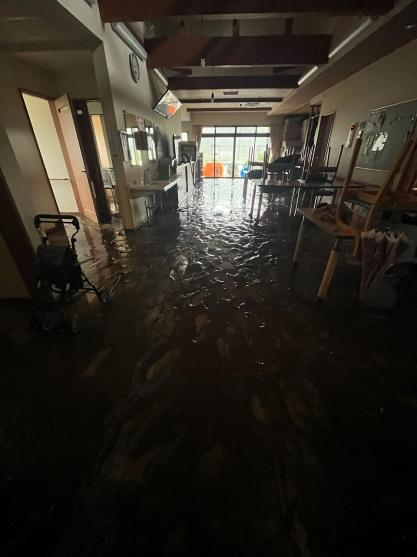
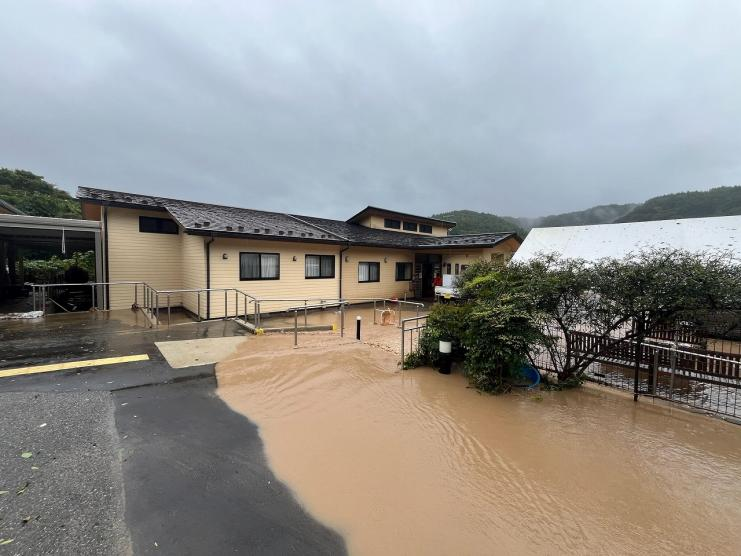

・・・・・・・・・・
My flight reservation for the 22nd was canceled due to heavy rain, so I managed to get to Takamatsu Station, near the entrance to the Noto Peninsula, by Shinkansen and local train around 9am, where M-san came to pick me up. Apparently M-san had to detour twice to avoid landslides blocking the road. This was my fifth time in Noto since April. However, the area was in chaos due to the heavy rain damage, and I was immediately informed that the after-party had been cancelled.
In the afternoon, we met up with Matsurism members in Noto Town and transported plastic bottles and batteries to isolated temporary housing in the Yanagida district, deep in the mountains. Landslides and river flooding have occurred everywhere, cutting off roads. Since it has just happened and there is no information available, we have repeatedly made detours, turning back and going out. It seems that there were over 100 isolated areas in Wajima, Suzu, and Noto Town. Mr. M said, “I was speechless when I saw the damage from the earthquake, but it is safe to say that the flood damage was even worse.”
On the 23rd, we met with local people and discussed GRIDFRAME’s future activities in Noto.
After I returned to Tokyo on the morning of the 24th, Mr. M continued to help with mud cleaning at the Maple House in front of the gate, transporting materials from Kanazawa to Wajima, and removing mud from the gutters in Suzu, before returning to Tokyo on the 27th.
The recent torrential rains have left not only the victims but also local supporters feeling a sense of distress, but on the other hand, professional volunteers from all over the country acted quickly, and more and more volunteers have been gathering since then. This is a truly encouraging trend.
It makes me think about the mysterious feeling that makes people want to help others.
<Two things we want to convey about Oku-Noto>
If the after-party had been held, I would have wanted to say the following two things to the people of Udezu who helped with the festival.
1. Things destroyed in the earthquake were reused in a faraway place for the future.
We wanted to report that thanks to the donation of materials from the disaster-stricken city of Udezu that would have been lost, they have been put to good use in creating spaces in Tokyo for the future.
Nine months have passed since the Noto Peninsula earthquake, and we at GRIDFRAME have been able to launch two projects in Tokyo, which we have named “Projects to Utilize Items Destroyed by the Noto Peninsula Earthquake for the Future,” in which we receive donations of items damaged in the earthquake and use them as materials to create new spaces.

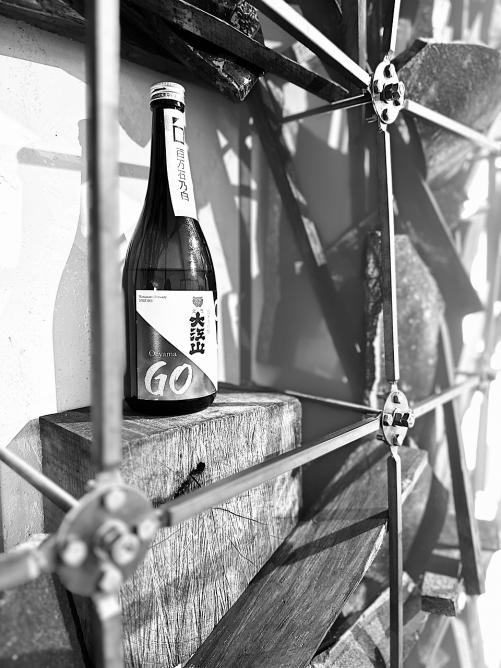
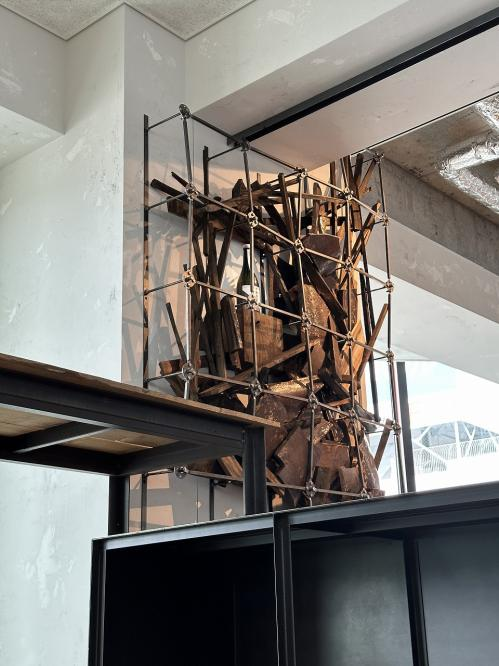
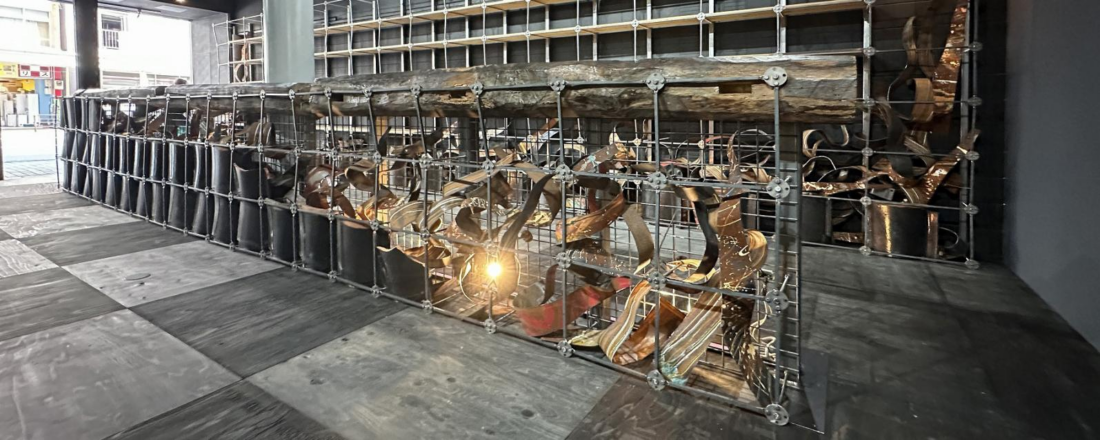
Neither of these can be called large-scale, but I believe that physical quantity has little to do with passing on the memories of time. The essence is to convey what might be called the soul of Noto, and of course, this is not the kind of thing that can be conveyed unconditionally to everyone. If the soul can be conveyed to someone, it can only be when that person is alone, quietly facing the object that houses the soul, one-on-one.
I believe that the two spaces we have created in Tokyo have the potential to convey the spirit of Noto to anyone who stops to look at them, and I would like to continue creating spaces in various places that convey the spirit of Noto.
2. To ensure that the town remains a place with a soul, we will use the things destroyed in the earthquake as materials for reconstruction.
I believe that this is something we must achieve as soon as possible in the future.
At first, I was only thinking about realizing this in a faraway place, but after making frequent visits to Oku-Noto, I now feel the need to take over what has been broken here in Oku-Noto.

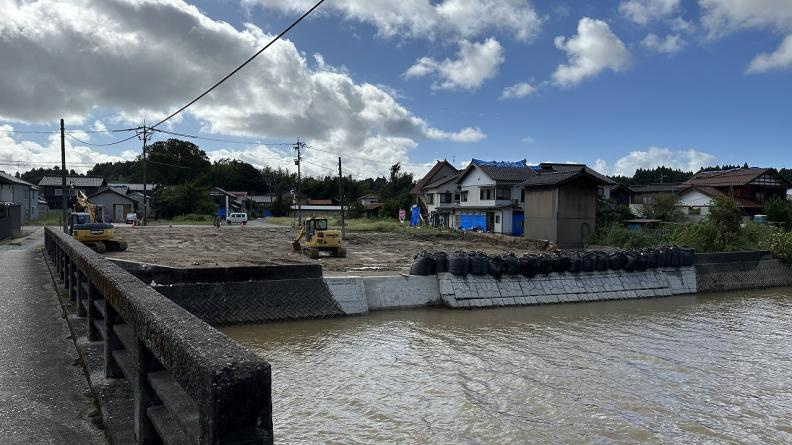
By participating in the Abare Festival, I came to understand with all my heart that a festival can only exist in a place where souls reside. And that we must take over this place where souls reside.
I have heard that in the Great East Japan Earthquake, old buildings were cleared away to make way for residential development, and in towns where temporal continuity was severed, human connections were also lost. This means that the souls that dwelled in the old buildings were also lost.
I feel that broken things remember the long past, and that because they have collapsed, they emit something powerful. Things that wouldn’t have said much if they hadn’t been affected by the disaster begin to speak eloquently through their collapse. In order to pass on the soul, I feel that we need to actively preserve broken things, rather than simply wipe them out.
I wanted to share what I wrote at the end of Vol. 9.
“Even a small project would be fine. Could we have the opportunity to take on the challenge of restoring the space that was destroyed by the Noto Peninsula earthquake?”
I wrote that this must be realized as soon as possible because if the broken things are cleared away by publicly funded demolition, we will lose the means to maintain continuity with the past. We cannot use a large amount of them, but by making this a reality, I hope that more people will sense the need and take action.
I am currently in Tokyo prototyping what I want to create in Oku-Noto, and I plan to reveal it in the next issue.
The “Project to utilize things destroyed by the Noto Peninsula earthquake for the future” will end when the destroyed things are gone. The key question is how much of the destroyed things can be utilized for the future by then.
<For one-on-one interaction>
My goal, not just in creating the space, but in everything I do, is to have one-on-one interaction.
It was during my second year of graduate school at Kyoto University that I was introduced to a friend I met in Africa and visited Kato Gikan, a Buddhist monk at Enpukuji Temple in Yawata, Kyoto Prefecture, with a junior colleague. “Although it’s prohibited to let people stay overnight, please let us stay secretly,” he said, letting us stay the night and telling us stories late into the night.
Yoshimitsu must have been in his mid-30s at the time, and he had a huge influence on me just before I entered the workforce.
What remains in my memory is when he said, “If I read a book and it makes a strong impression on me, I will visit the author in person to decide whether I can trust it.” For example, he said, “If the author is a professor at Kyoto University, I will sneak into a lecture and observe the person. I don’t have to talk to them directly, just seeing them is enough.”
Looking back, I now realize that he was teaching me what it means to face someone one-on-one.
After that, we continued to visit each other and met several times. When I was studying abroad in New York State, he came to visit me in Buffalo.
He was a person who liked people.
Once he is interested in something, he is not intimidated at all. With his shaved head and monk’s working clothes, he is instantly recognizable as a monk, and he can enter anywhere. When he entered the grounds of a mansion with interesting architecture, and a dog barked and the landload came out, I was frightened, but Gikan could soon put a smile on the landlord’s face.
After that, he created an opportunity for me to visit the mansion several times, taking along my student friends.
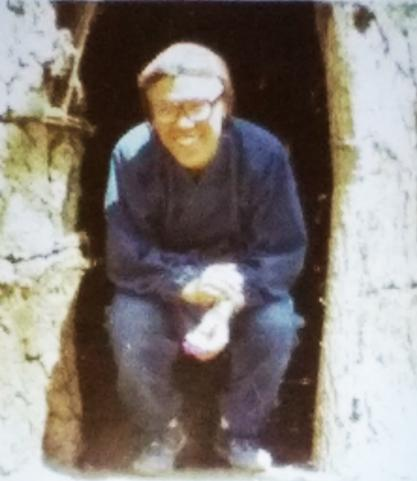
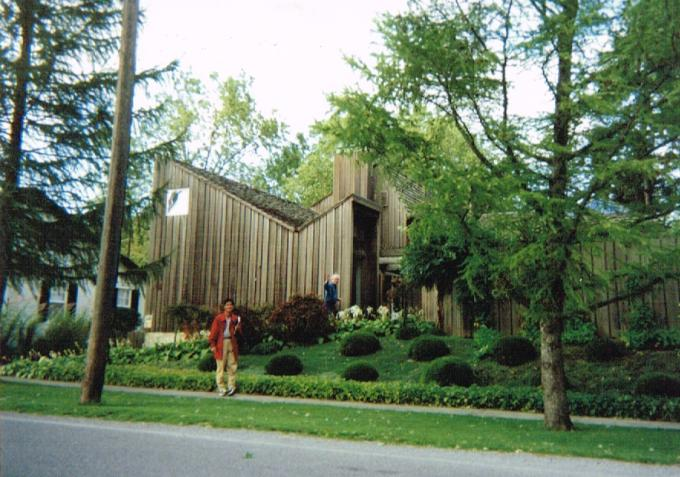
As I listened to his various stories, I once asked him, “Are you not going to get married, Gikan?”
Gikan replied:
“I actually had some doubts, but I thought that if parishioners of the temple came to me with some kind of problem and I wasn’t lonely, I wouldn’t be able to always be happy to help them. So I decided not to get married.”
A heavy resolve wrapped in gentle words. I later realized that this was talking about the “conditions for one-on-one interaction.”
Keep yourself in a state of detachment. Live your life based on this state.
Kato Gikan, known in his later years as Kato Gesso Roshi, passed away on April 30, 2020, at the age of 68.
Gikan-san, see you again someday, somewhere.
<The 3rd Paint Miracle @ Kyonan Pakchi Bank>
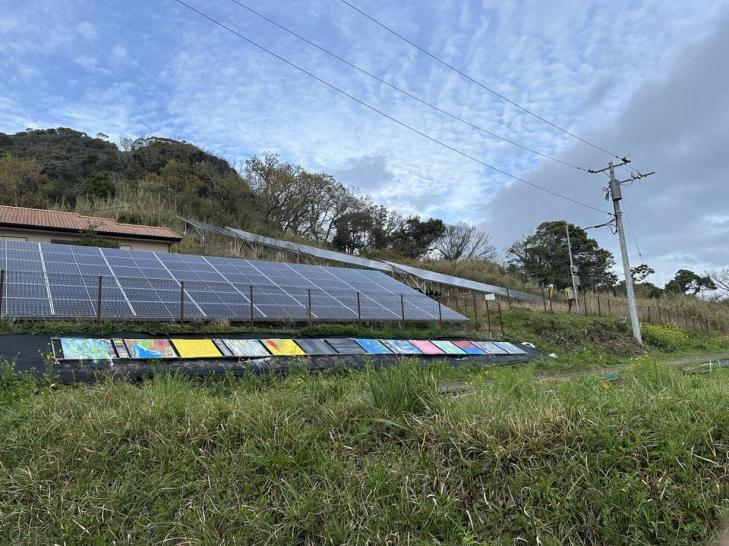
Saturday, October 26th, 10:30-16:00 This will be the first time the event has been held in about six months. Everyone, please come along! Please register your participation in advance. For more details, please visit the Facebook page below.
https://www.facebook.com/events/1053619489371313
In the next issue, we will continue to tell you about SOTOCHIKU’s various activities.
September 30, 2024 GRIDFRAME Toshiro Tanaka

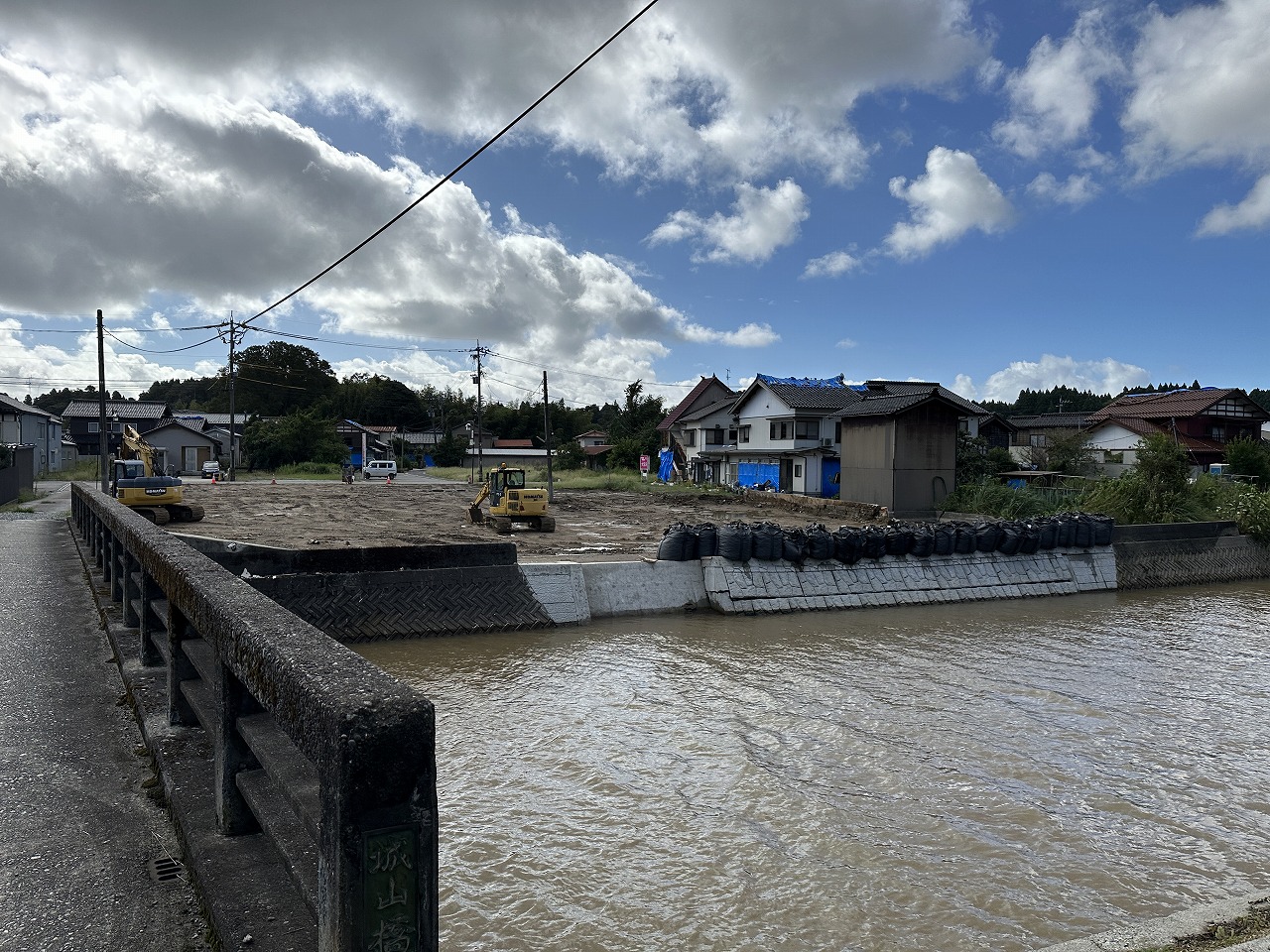
Comments are closed